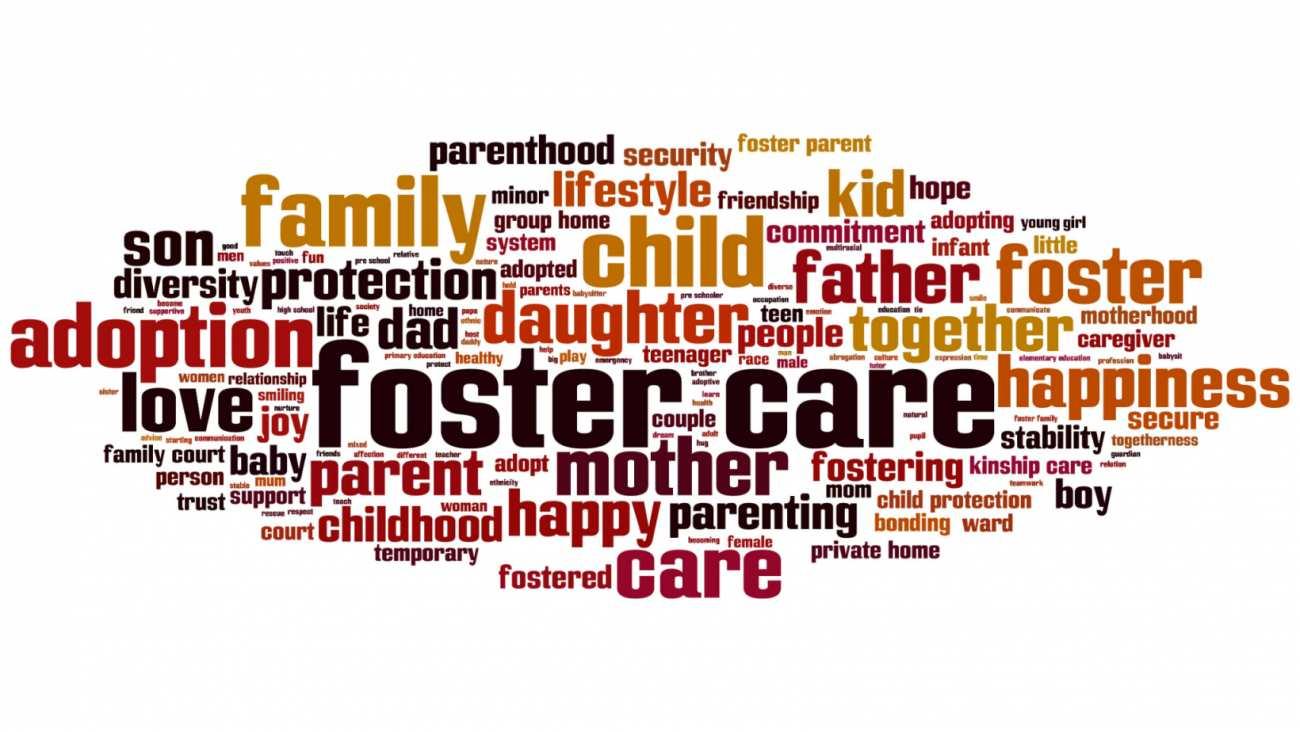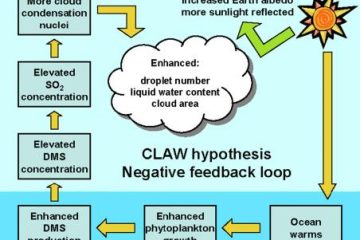Table of Contents
- Understanding Gaia Theory and Its Perspective on Climate Change
- The Interconnectedness of Earths Systems and Climate Dynamics
- Human Impact on the Gaia Hypothesis and Global Ecosystems
- Strategies for Adopting Gaia-inspired Approaches to Mitigate Climate Change
- Fostering a Sustainable Future Through Gaia Theory Principles
- Q&A
- To Wrap It Up

Understanding Gaia Theory and Its Perspective on Climate Change
Gaia Theory, proposed by scientist James Lovelock in the 1970s, presents a revolutionary perspective on the interconnectedness of life and the Earth’s systems. This hypothesis suggests that living organisms interact with their inorganic surroundings to form a self-regulating complex system that maintains the conditions for life on the planet. By viewing Earth as a single organism, the theory emphasizes the importance of biodiversity and ecosystem health in regulating the climate. Such a view shifts focus from seeing climate change solely as an environmental issue to recognizing its intrinsic links to the health of the entire biosphere.
From the vantage point of Gaia Theory, climate change is not merely a result of human activity but reflects the response of a dynamic living system trying to maintain balance. The theory indicates that the Earth’s ecosystems possess inherent mechanisms that can either mitigate or exacerbate the effects of climate change. For instance, forests, wetlands, and oceanic systems all play crucial roles in carbon storage and temperature regulation. Understanding these interactions can inform more sustainable practices and policies to address climate challenges effectively.
To fully appreciate the implications of Gaia Theory on climate change, it is essential to consider the following aspects:
- Interconnectedness: Ecosystems do not function in isolation; changes in one can have cascading effects on others.
- Resilience: The Earth’s systems can often withstand shocks but may reach tipping points, leading to irreversible changes.
- Human Impact: Anthropogenic activities disrupt the balance, urging rapid adaptation and proactive measures to safeguard biodiversity.
In exploring this perspective, it becomes evident that addressing climate change requires a holistic understanding of the Earth as a living entity. Emphasizing preservation and restoration of ecosystems can contribute significantly to climate resilience and sustainability.

The Interconnectedness of Earths Systems and Climate Dynamics
The intricate relationships among the Earth’s various systems play a pivotal role in shaping the climate and maintaining the delicate balance of life. At the core of these connections is the concept that every element—be it the atmosphere, hydrosphere, lithosphere, or biosphere—interacts in complex ways. For instance, the carbon cycle illustrates how carbon flows between land, water, and air, influencing both the climate and biodiversity. As natural phenomena, such as volcanic eruptions and wildfires, release carbon into the atmosphere, human activities like burning fossil fuels have accelerated this cycle, leading to an imbalance that affects global temperatures.
Moreover, the hydrosphere is equally vital, as it regulates climate through ocean currents and weather patterns. Oceans not only absorb a significant portion of greenhouse gases but also redistribute heat around the planet. The warming of ocean waters leads to phenomena such as El Niño and La Niña, which can drastically alter weather across continents. Understanding these interactions helps scientists predict changes in climate and assess the impacts of these shifts on ecosystems and human settlements.
Recognizing the interconnectedness of these systems can drive more effective responses to climate challenges. Adaptation and mitigation strategies must consider the relationships between these different elements. Some potential approaches include:
- Integrating ecosystem services into urban planning
- Restoring natural habitats to enhance carbon sequestration
- Implementing sustainable agricultural practices that respect soil health
Human Impact on the Gaia Hypothesis and Global Ecosystems
The Gaia Hypothesis posits that Earth and its biological systems behave as a single, self-regulating entity. This idea resonates strongly in the context of climate change, as human activities have significantly disrupted the delicate balance maintained by natural processes. Deforestation, industrial pollution, and overexploitation of resources have contributed to the degradation of ecosystems, resulting in unintended consequences for both biodiversity and climate regulation. The interconnectedness of species and their environments underscores the importance of adopting a holistic approach to environmental stewardship, ensuring that our actions promote—not undermine—the resilience of these systems.
Human-induced changes have also led to shifts in the planet’s climatic patterns, illustrating how our presence can influence biological and geological processes. The increase in greenhouse gas emissions from transportation, agriculture, and energy production has accelerated global warming, leading to more extreme weather events, rising sea levels, and altered habitats. As ecosystems respond to these changes, we witness the migration of species, shifts in food availability, and increased vulnerability to invasive species. This intricate interplay shows that while we are an integral part of Earth’s systems, our impact may lead to disruptions that jeopardize both humanity and the planet.
To better understand this relationship, it’s vital to examine local and global efforts aimed at restoring balance. Initiatives such as reforestation projects, sustainable agriculture practices, and renewable energy adoption play a crucial role in mitigating our impact. By working collaboratively on these fronts, we can enhance biodiversity and promote a robust environment that benefits all life forms. Here’s a snapshot of some effective strategies:
| Strategy | Description | Benefits |
|---|---|---|
| Reforestation | Planting trees in deforested areas | Restores habitats and sequesters carbon |
| Sustainable Farming | Practicing techniques that preserve resources | Enhances soil health and conserves water |
| Renewable Energy | Utilizing wind, solar, and hydro power | Reduces reliance on fossil fuels and lowers emissions |

Strategies for Adopting Gaia-inspired Approaches to Mitigate Climate Change
Integrating Gaia-inspired principles into our daily practices can pave the way for innovative solutions in the fight against climate change. This approach focuses on understanding the interconnectedness of ecosystems, promoting biodiversity, and nurturing the relationship between living organisms and their environment. Communities can adopt these principles by engaging in local conservation projects, enhancing urban green spaces, and employing sustainable agricultural practices, which work harmoniously with natural ecosystems rather than against them.
A vital strategy is to build awareness and education around Gaia Theory. Educational initiatives can empower individuals to recognize their role in the ecosystem and promote sustainable behaviors. Here are several key actions to foster such awareness:
- Organizing workshops and seminars centered on sustainability.
- Implementing environmental curriculum in schools that emphasizes systems thinking.
- Creating community-based campaigns to promote local flora and fauna appreciation.
Furthermore, adopting a circular economy model can reflect Gaia’s interconnected systems. By focusing on reducing waste, reusing resources, and recycling materials, communities can minimize their carbon footprint. A potential method to implement this is through collaborative consumption, where resources such as tools, vehicles, and even spaces are shared among community members. This can lead to a significant reduction in the demand for new products and manufacturing, thus supporting a more sustainable way of living. Consider the following approach:
| Action | Impact |
|---|---|
| Community Tool Libraries | Reduced individual purchasing; promotes sharing. |
| Local Sharing Networks | Encourages collaboration; decreases resource consumption. |
| Urban Seed Swaps | Preserves biodiversity; enhances local food systems. |

Fostering a Sustainable Future Through Gaia Theory Principles
Embracing the principles of Gaia Theory offers a holistic approach to addressing climate change. At its core, Gaia Theory posits that Earth functions as a self-regulating system, where living organisms and their inorganic surroundings are interconnected in a delicate balance. This interconnectedness underlines the importance of considering environmental, social, and economic factors as we strive for sustainability. Thus, fostering a sustainable future requires us to:
- Enhance Biodiversity: Protecting diverse ecosystems ensures resilience against climate impacts.
- Reduce Carbon Footprint: Transitioning to renewable energy sources mitigates greenhouse gas emissions.
- Promote Circular Economies: Reusing and recycling materials supports resource efficiency and reduces waste.
Integrating Gaia Theory into policy and community practices can lead to tangible outcomes. For instance, encouraging local farming initiatives can enhance food security while promoting biodiversity. Educational programs that emphasize ecologically sustainable practices can also inspire collective action. Below is a brief overview of key initiatives that align with Gaia principles:
| Initiative | Description | Impact |
|---|---|---|
| Urban Green Spaces | Creating parks in urban areas to promote biodiversity. | Enhances air quality and community well-being. |
| Sustainable Forestry | Implementing practices that preserve forest ecosystems. | Maintains habitat and contributes to carbon sequestration. |
| Community Solar Projects | Involving communities in solar energy generation. | Reduces reliance on fossil fuels and lowers energy costs. |
By harnessing the principles of Gaia Theory, we can cultivate a network of responsible practices that not only address climate challenges but also lay the groundwork for a resilient planet. This interconnected approach demands our active participation, ensuring that every decision made today resonates positively in the ecosystems of tomorrow.
Q&A
Q&A on Gaia Theory and Climate Change
Q1: What is Gaia Theory? A: Gaia Theory, proposed by James Lovelock in the 1970s, suggests that the Earth functions as a self-regulating system. It posits that living organisms interact with their inorganic surroundings to maintain conditions suitable for life. This interconnectedness highlights how species, including humans, play a critical role in Earth’s ecological balance.Q2: How does Gaia Theory relate to climate change? A: Gaia Theory offers a framework for understanding climate change as a result of human activities disrupting the Earth’s natural regulatory processes. By altering atmospheric composition, land use, and biodiversity, we can potentially throw the system off balance, impacting not just climate but the overall health of the planet.
Q3: Can Gaia Theory help us address climate change? A: Yes! By recognizing our role in Earth’s system, Gaia Theory encourages us to adopt sustainable practices. It emphasizes the importance of maintaining biodiversity and ecosystem integrity as essential strategies for mitigating climate change and promoting resilience against future ecological challenges.
Q4: What are some criticisms of Gaia Theory in the context of climate change? A: Critics argue that while Gaia Theory provides a holistic view, it can oversimplify complex environmental interactions. Some scientists contend that it may detract from the urgency of human-driven climate actions by suggesting that the Earth will inherently self-correct, which might not always be the case if systems become irreversibly damaged.
Q5: How can individuals apply Gaia Theory principles to combat climate change? A: Individuals can adopt Gaia principles by embracing sustainability: reducing waste, conserving energy, supporting local ecosystems, and advocating for policies aimed at preserving environmental balance. Small actions collectively contribute to a healthier planet, reinforcing the idea that every organism plays a vital role in the Earth’s lifecycle.
Q6: Is there a scientific consensus on Gaia Theory? A: There is ongoing debate within the scientific community about the validity of Gaia Theory as a scientific model. While it isn’t universally accepted, many acknowledge its value as an ecological perspective that brings attention to the delicate interconnections of the biosphere, promoting a deeper appreciation for environmental stewardship.
Q7: What role do humans play in the Gaia system? A: Humans are both influencers and dependents within the Gaia system. Our actions significantly impact global dynamics, whether through agriculture, urbanization, or energy consumption. Understanding this dual role reminds us of our responsibility to act not just as stewards of the environment but also as active participants in maintaining its balance.
Q8: How does Gaia Theory expand our understanding of nature and its processes? A: Gaia Theory invites us to view the Earth as a living entity where biological and geological components collaborate for equilibrium. This perspective fosters a sense of responsibility and connection to nature, highlighting that our survival hinges on the health of the planet and that all life forms are intricately linked.
Q9: What future does Gaia Theory envision for Earth if climate change persists? A: If climate change continues unchecked, Gaia Theory suggests that Earth’s self-regulation mechanisms may falter, leading to potential drastic shifts in climate and ecosystems. This could result in the loss of biodiversity, altered habitats, and even a diminished capacity for life itself, underscoring the urgency for immediate action to mitigate climate impacts.
Q10: Where can I learn more about Gaia Theory and its implications for climate change? A: To delve deeper, you can explore James Lovelock’s works, such as “Gaia: A New Look at Life on Earth,” or consult academic articles on Earth systems science. Online platforms, documentaries, and educational resources from conservation organizations also provide valuable insights into the complexities of Gaia Theory and climate dynamics.



0 Comments